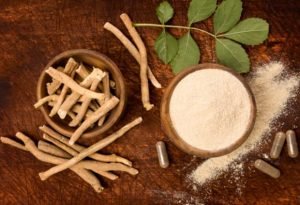
by admin | Jun 11, 2022 | Fitness
Barbells VS Dumbbells – Which One’s Better?
In the modern-day world, training your body usually happens in the gym, where you have a variety of dumbbell, barbell and machine exercises. In the context of free weight however, there has been one question floating around – What’s better, barbells or dumbbells?
If you’ve asked yourself this, keep reading because in this article we’ll underline the differences and benefits of both barbells and dumbbells, to help you create your perfect workout plan.
The Specifics
One of the main rules of weight training is to use a variety of equipment, angles and types of grip. The reason why this is important, is because even a slight change in the grip or angle of a given exercise, changes the specifics of that same exercise.
What this means is that a different type of equipment or a different angle/grip will shift the tension towards different muscles/zones of the worked muscle group. For instance, the flat bench press will mainly engage your mid and lower chest, while also engaging the triceps and shoulders.
However, an incline bench press will put more tension on the upper portion of the chest, along with increased tension for the shoulders. From this information, we can conclude that both barbells and dumbbells have their application and there really isn’t a “better” one. The point is to use each type of equipment for its designated purposes, in accordance with what your goal is.
The Benefits Of Barbells

Barbells are without a doubt one of the most effective ways to stimulate the musculature, whether we’re talking about muscle growth or training during the fat loss phase.
Here’s why:
- Barbells allow you to lift heavier weights
Because there is generally a fixed point between the working limbs, barbells allow you to lift heavier weights in general. This is also perhaps because of the fact that barbell exercises are more stabilized by nature, thus allowing your body to activate more of your fast-twitch muscle fibers.
You can check this for yourself – If you’re barbell bench pressing 80 kg for reps, odds are that you won’t be able to dumbbell press 40 kg on each hand as easily.
- Easier Realization Of Training Principles
When it comes to muscular development, there is one very important principle to consider. That is namely progressive overload, which implies that you should, overtime, progressively increase the demand upon the musculature (i.e increasing weight, reps, sets, etc.)
Because barbells allow you to lift heavier weights with more stability, increasing your workload is an easy task with barbells, as opposed to dumbbells Both of these benefits allow for greater working volume overall, which means that barbells are especially good during periods of gaining muscle mass.
The Benefits Of Dumbbells

Though barbells have a load of benefits when it comes to muscular development, that doesn’t mean dumbbells should be totally excluded.
Here are the main benefits of dumbbells:
- Bringing up weaker muscle groups
Because dumbbells inevitably make you use each side of your body separately, they can be one of your best picks when you’re trying to bring up your weaker side.
The individual load on each side simply doesn’t allow your stronger side to overtake the movement, thus creating sufficient stimulation on the side that creates asymmetry.
- Muscle Unit Activation
One of the most crucial factors when it comes to lifting heavy weights, is the muscle unit (muscle fiber) activation. With barbells, movements are generally fixed in a shorter range of motion, while dumbbells allow for greater movement of the arms. This therefore grants increased muscle activation, even on fundamental exercises like the bench press
Take Home Message
In the context of better overall development, there isn’t really a winner in the fight between barbells vs. dumbbells… Both have their benefits, which is why you should rather rely on a mix of the two, in your workout regimen.
Use barbells when you want to heavily target progressive overload and lift the heaviest weight possible. Use dumbbells when you want to bring up your weaker side and work more on joint stability, rather than maximum strength. Tell us your favorite barbell/dumbbell exercises in the comment section below!

by admin | Jun 11, 2022 | Fitness
How to get more antioxidants
Let’s talk Antioxidants – Part 2
10 Ways To Get More Antioxidants Into Your Daily Routine
It is no secret that antioxidants help keep the body healthy. It’s believed the antioxidants in food can help prevent cancer, reverse or slow aging, enhance your immune system, increase your energy and improve heart and organ health.
Antioxidants also offer protection from a range of other ailments, including heart disease, type 2 diabetes, neurodegenerative diseases such as Alzheimer’s and Parkinson’s. Antioxidants are substances that either prevent or repair the damage caused by reactive oxygen species (ROS).
The words “antioxidant” and “oxidant” were first used in 1928 by Walter Reichert and Fritz Paneth who, when measuring oxidation of fats in the body, found that fats could be made to withstand oxidation better if they had been heated first. The term “antioxidant” was coined because it was thought that these substances are good for your health because they help to slow down the process of aging. It is estimated that approximately 10-20% of your total body weight is composed of antioxidant compounds.
Considering how beneficial antioxidants are, it is amazing that more people aren’t consuming enough fruits and vegetables, which are excellent sources of antioxidants. Experts recommend eating at least five servings of fruits and veg every day, and often I’ve read it is preferred between 7 and ten. My advice is getting as much as you can. Closer to ten than five.
Ok let’s look at how we can get more antioxidants into our daily routine.
1.Start with a drink and Breakfast

Get off to a good start with some lemon water – lemon contains Eriocitrin, the main lemon polyphenol, which is a water-soluble antioxidant and abundant in lemon juice and peel. The morning meal does not have to be so hurriedly thrown together on the run that it is just some burnt toast and jam now does it.
While you can do it quick, be careful to keep it healthy at the same time. Strawberries, or other berries, 100% juice, and some coconut yogurt can be mixed together in a blender. Transfer the blend to a cup and enjoy your tasty snack. You’ve just added one to three servings of fruit to your daily intake. Or add some berries to your cold or hot cereal.
- Antioxidant snacks
Here are a few ways to increase your antioxidant intake.
A handful of raisins or a bowl of fresh red grapes would be great for a snack. Dip some strawberries or blackberries in yoghurt. You will feel decadent, but the berries provide the colour you’re looking for. Need some crunch? A dip of baby carrots in hummus may be just the thing and will add some healthy vitamin A.
Pecans have a great crunch and are rich in antioxidants. Even some raw dark chocolate is an indulgent but great antioxidant especially homemade with blueberries or goji berries. Let’s not forget the antioxidant packed staple banana.
3.Lunch and dinner

A salad can serve as a great addition to each of your main meals each day, which will improve your health and wellbeing. They need not be boring, and they need not be just salad greens. For a classic green salad, add some red pepper slices, some tomatoes, or cranberries to the Greek salad. Throw in some red cabbage.
Lunch can be as simple as a broccoli salad, or as exotic as a rice salad mixed with string beans, peppers, tomatoes, and onions. Add avocado for vitamin E and good fat. Add a nice garlicky, olive oil lemon juice dressing for a few more antioxidants and a bit of punchy zest.
4.Dessert
Berry desserts, with or without whipped cream or chocolate, are a delicious way to end your healthy, antioxidant-rich eating day. Pomegranates drizzled in chocolate or added in a muffin base would go down a treat here.
5.Beverages
Make tea or coffee your drink of choice instead of soda, as they are packed with antioxidant compounds. If you’re going for a glass of wine opt for red, with dinner, or if you want to switch it up, try a flavourful herbs and spice chai tea or chai latte instead.
6.Think outside the ‘fruit and veggie’ box
In addition to berries, salads, and other common foods that are high in antioxidants, researchers have discovered that russet potatoes, artichokes, and small red beans contain powerful compounds as well.
Researchers say beans may be more antioxidant-rich than blueberries. I know I almost didn’t believe that one myself but hey it’s all good stuff. So now you know, adding beans to your already veggie-filled rice salad will make it even richer in antioxidants than an ordinary salad.
7.Don’t overcook

When you prepare vegetables for dinner each night for your family, you think you’re doing a good thing, which of course you are. Let’s not forget that first and foremost. Nonetheless, if you’re overcooking your vegetables, a lot of their beneficial antioxidant properties are being cooked out.
The best way to cook vegetables is to steam them (don’t boil them) and stop after their bright colour is fully developed and most of their bite is still present.
8.Get growing!
Those who plant and harvest vegetables in their own gardens eat more vegetables and fruits than those who buy their produce from the store, according to experts. Now I can’t speak for everyone, but I at least know that I eat far more when I grow my own fruit and veg as it’s such a pleasure to get out in the garden, nurture everything and see it grow.
To harvest your own food and know exactly where it came from is such a delight. I highly encourage it! If you plant your own little garden, you can watch your garden grow and enjoy the veggies and fruits (literally) of your labour. How amazing is that?
- Don’t let going away ruin your healthy diet.
It’s not uncommon for the majority of us to view vacations as a time to disregard healthy eating. But you could also take a different view and think of vacations as opportunities to experience new foods. You can explore the way a chef prepares an interesting vegetable dish by ordering one in a restaurant.
Try out new and interesting fruits and veggies that you don’t see often at home. Explore, your body and your taste buds will thank you.
- Develop your cooking skills
The art of cooking involves preparing whole foods, washing and peeling veggies, and paying attention to how they are prepared, not opening take away boxes and bags. We get the majority of our antioxidants from eating whole foods and natural fruits and vegetables. If you order out every night, your intake is greatly reduced.
So, try to focus more on what you actually eat, where it comes from and how it is prepared to ensure you get a healthier, more antioxidant-fueled way of life.
Disclaimer
Article for entertainment and information purposes only. Always seek a medical opinion before trying any new supplements or nutrition routine and never stop taking medication without speaking to your medical provider.

by admin | Jun 11, 2022 | Fitness
Common Training Mistakes
Our intention is not to criticize your exercise regimen or suggest that you’re not making progress. We won’t claim that you’re squandering your time at the gym or that your existing workout routine will never lead to any results.
Yet, it’s worth noting that numerous workout mistakes can hinder our progress in achieving our fitness goals. It’s essential to be aware of these errors if you’re aiming to improve your physical fitness this year.
Therefore, we’d like to share some of the most frequent training blunders that people tend to make, which can waste their time and prevent them from achieving their desired outcomes. Pay close attention, as this knowledge can help you avoid such pitfalls.
Ego Lifting
It’s common knowledge that the gym can be a place to boost one’s ego and self-confidence. Who doesn’t love flaunting their tightest tank top and most impressive pair of sweatpants? However, indulging in ego lifting at the gym may feel good in the moment, but it can be detrimental in the long run.
Ego lifting refers to lifting weights that are too heavy for you, using improper form. It can result in injuries, suboptimal workouts, and potential embarrassment if you fail. Therefore, our advice is to avoid lifting weights that compromise your exercise form and put your muscles, joints, and ligaments at risk.
Instead, opt for moderately heavy weights that allow you to come close to failure without sacrificing proper form. This approach will help you maximize your gains while minimizing your risk of injury.
Not Resting Enough

Ego lifting (lifting too heavy) is a common mistake made by gym-goers, but the second most common mistake is lifting heavy weights without taking enough rest between sets. It’s important to understand that heavy lifting is incredibly taxing on the body, and rest periods are critical for maintaining performance.
Consider this scenario: if you perform 10 reps with a given weight and only rest for a minute, you’re likely to perform fewer reps on the next set if the weight is heavy. However, if you give yourself enough time to rest, you’re more likely to achieve those 10 reps again for at least a couple more sets.
So what does this mean? It means that your muscles are doing more work overall, resulting in better stimulation. For your heaviest lifts, take up to three minutes of rest between sets to allow your body to recover properly.
Progressing Too Quickly
The third mistake that many trainees make is attempting to increase the weight on the bar too rapidly. It’s common to see trainees abruptly increase the weight by 10-15%, which brings us back to the first mistake: ego lifting. Rather than increasing the weight too quickly, it’s crucial to systematize your progression and gradually increase the weight you’re lifting.
Here’s a strategy you can use:
- Begin with a specific weight.
- Aim for 32 or more total reps across four working sets.
- Once you’ve achieved 32 or more reps across four sets, increase the weight by 2.5-5%.
- Work your way up to achieving 32 or more reps across four sets with the new weight.
This approach will enable you to incrementally increase the weight you’re lifting while ensuring that your form remains intact and you don’t put yourself at risk of injury.
Doing Too Many Sets

Finally, it’s essential to note that most people perform too many sets in a single workout, which results in low-quality sets. A quality working set on any heavy exercise should leave you feeling like you need longer rest before your next set, and you’ll quickly notice a decrease in performance.
For beginners, 5 high-quality working sets per muscle group per week, taken close to failure, will suffice. As you advance, the number of sets should increase to 15-20+ to create an effective stimulus and continue progressing.
Therefore, here’s another piece of advice: select a couple of exercises and perform multiple sets, taken close to failure, with three minutes of rest between each set. This approach ensures that you’re completing high-quality sets, which will lead to better results in the long run.
Final Thoughts
Training mistakes are common but avoidable with some awareness and attention. By being mindful of the common pitfalls, you can focus on maximizing the benefits of your workouts and seeing results more quickly. Consistent effort and proper form are crucial to success in training.
It’s important to remain aware of these training mistakes and take steps to avoid them to achieve your fitness goals more efficiently. By avoiding these errors, you can make steady progress toward your goals. With a bit of patience and attention, you can avoid common training mistakes and achieve the results you desire.

by admin | Jun 11, 2022 | Fitness
Developing: How to get stronger shoulders
Your shoulders are one of the most important body parts, as they allow you to train basically every other part of your upper body. For this reason, making them functional and keeping them healthy is an important task on your fitness development to do list. In this article, we’re going to tell you more about the shoulders and how to train them properly, so if this is something of interest to you, keep reading!
Shoulder Anatomy

To understand exactly what the shoulders are doing, let us have a look at their superficial and deep anatomy. The main muscles of the shoulders are the deltoids, which are made up of 3 heads:
- The anterior (front) deltoid
- The medial (side) deltoid
- The posterior (back) deltoid
Each of these serves a variety of functions that allow a vast range of motion – You can lift your arms overhead, laterally, to the front and you can even take them back. However, this big range of motion can make the shoulder joint unstable and thus, vulnerable to injury.
So How Do You Stabilize The Shoulders?
Luckily, our bodies were designed like what seems to be a very adaptive machine with components for high performance! The shoulders are in fact, very well reinforced with stabilizing muscles, BUT, those muscles often become weaker due to the modern-day sedentary lifestyle and lack of natural movements like climbing. There are 4 muscles that stabilize the shoulder and are referred to as “the rotator cuff”.
Those are namely:
- The infraspinatus – This is the main rotator cuff muscle that allows you to extend and rotate the shoulder
- Supraspinatus – This second rotator cuff muscle allows you to lift your arm and also, keeps the shoulder joint in place
- Teres minor – This is a pretty small muscle, but important for the external rotation of the arm, away from the body
- Subscapularis – Last but not least, the subscapularis keeps your upper arm and shoulder blades tight and also helps with arm rotation
To strengthen the rotator cuff, you should do exercises such as:

- Resistance band external rotation
- Resistance band internal rotation
- Active hanging
- Passive hanging
- Climbing
All of these movements will help you stabilize your shoulders and thus, you can have a greater output on the strength exercises for the deltoids, safely.
Training The Deltoids
As we already mentioned, the deltoids work with a variety of other upper body muscle groups. The main muscle groups that work in synergy with the shoulders are the chest and the triceps. These usually work together to help you complete complex exercises, such as:
- The bench press
- The overhead press
- The push-up
For this reason, when it comes to getting better, stronger shoulders, you should mostly rely on compound, free-weight movements, instead of isolated exercises.
Compound movements will allow you to engage synergistic muscle groups to ultimately lift a bigger load, while placing the focus on the desired area (i.e the triceps and upper chest will help you during an overhead press, but most of the work will go for the shoulders.
Here are the 5 best deltoid building exercises:
- Overhead presses (these are king, especially for the front deltoids)
- One Arm Lateral raises
- Two Arms Lateral Raises
- Machine Lateral Raises
- One Arm Dumbbell Upright Row
- Handstands
- Climbing (again, really?)
- Olympic clean
When you combine powerful, compound deltoid movements, with precise, focused rotator cuff work, you will inevitably set yourself up for a healthy shoulder line in the long term.
PLUS… Deltoids can make or break the physique you have, so work on them!
Take Home Message
The shoulders play a major role in your upper body training, which is the main reason why you should pay specific attention to their development.
Before establishing a foundation of heavy overhead presses and lateral movements, think about your rotator cuff and what you can do to strengthen it. Only then, you can move into the more solid exercises that will allow you to develop overall strength and looks of the shoulders.

by admin | Jun 11, 2022 | Fitness, General
Reliable Fitness Websites
Looking for fitness information online can be very daunting. There are many fitness websites and blogs, with some of them sharing false information thus you are likely to get misinformed. Therefore, you have to be careful in your selection of the sites where you want to seek insight and information on maintaining a fit and healthy body. Despite that, you can still get some reliable fitness websites such as;
Muscle & Fitness
Do you want to gain muscles and stay fit? Here is a website where you can get all information on how to add muscles and achieve your desired body shape. This site will also enlighten you on meal plans you have to adopt in order to achieve your fitness goals. Feel free to visit this site to learn how to build muscles and have a healthy body. The site is endorsed with a lot of comprehensive articles on fitness to help you in this quest you are on.
Menno Henselmans
This site is not only informational but also very distinct in its own right. It provides online coaching, online classes, and articles, but shares content that is cymene oriented. This will give you a unique approach to your fitness journey through applying proven science-based interventions.
Run To The Finnish
Run To The Finnish is a site that is basically all about training to run. This site shares a lot of content on injury recovery insight, running tips, and how to select efficient running shoes and nutrition help. If you are an athlete, this website will sort you out big time. The information being shared has been well researched therefore you stand to benefit from it.
My Fitness Pal
My Fitness pal gives uses an opportunity to access fitness and nutrition advice. Users can also track their log activities and calories. Last but not least, this website comes with apps to help you while working out. Therefore, this makes My Fitness Pal a great companion or partner for any person who wants to manage their weight and stay fit.
Planet Fitness
Planet Fitness offers a lot of information on how to work out in the gym and stay in great shape. This site is very focused on ensuring people can work out at their own convenience by enlightening you on how you can train at home. Besides, the website has guides for beginners who are looking forward to their first workout session.
Conclusion
When seeking advice and information on fitness, you have to rely on credible sources. The websites you choose should be very reliable. Unfortunately, finding such sites is not a walk in the park. There are a ton of websites out there, and you are likely to fall prey to misinformation. Some of those sites are created by selfish individuals with an intention to extort money from people. They have put in place insane membership plans which are very expensive with a promise of giving clients the best fitness advice or programs. Therefore, be vigilant and do not just take in any fitness advice you read online.

by admin | Jun 10, 2022 | Fitness
Muscle building 101 | Part 3 – Types of muscle fibers
In the last 2 articles of the muscle-building series, you learned that each workout can be measured by certain parameters (variables). The ratios of these variables trigger different energy systems and components of the body and its musculature, thus creating a different end result.
In this article, we are going to go in-depth on the muscles’ active, contractile components, which we know as “muscle fibers”.
What Are Muscle Fibers?
Each muscle fiber, also called a “myofibril”, is an active, contractile component of each of your muscle groups. These are the active components that allow for muscular contraction and there are different types of muscle fibers. Depending on how demanding the activity is, the body chooses which muscle fibers to activate
Types Of Muscle Fibers

When we look at muscle fibers as an active component of your musculature, we can differentiate between two main muscle fiber types:
- Type 1 – Slow-twitch muscle fibers
- Type 2 – Fast-twitch muscle fibers
Slow-Twitch Muscle Fibers
This type of muscle fiber is the weaker type of tissue, as its power & force production levels are quite low. Your slow-twitch muscle fibers get activated during activity that is not demanding or in other words, low in intensity. Though generally weak, the slow-twitch muscle fibers can work for hours on end.
This is the muscle fiber type that was designed for endurance bouts, such as cross running, prolonged rope jumping or any other low-intensity activity that is fairly long in duration.
Fast-Twitch Muscle Fibers
On the other hand, we have the fast-twitch muscle fibers, which are the stronger, more powerful active components of your musculature. Your fast-twitch muscle fibers get activated during intense activity that demands the production of force/power. This type of fiber was designed for short, power-burst movements, such as a sprint or any type of resistance/weight training.
The fast-twitch fibers are the most powerful ones and have the highest potential for hypertrophy (growth). Furthermore, the fast-twitch muscle fibers have 2 more subtypes – Fast-twitch Type 2X & type 2B. Type 2X fibers are able to generate the most force and power output but are generally inefficient due to reaching fatigue fairly quickly.
Type 2B fibers on the other hand are a mix of type 1 and type 2x fibers, meaning that they can endure more intense activity for longer.
To Sum It Up
Your musculature is made up of 2 different types of muscle fibers – Slow & Fast-twitch. The slow muscle fibers get activated during low-intensity, prolonged activities. These fibers can work at low intensity for hours on end but cannot produce enough power and force for intense activities like sprinting.
This is where fast-twitch muscle fibers come in. When the task at hand is to engage in more intense activities, the body utilizes the power of your fast-twitch muscle fibers. These muscle fibers are big, strong, and can produce short powerful bursts, but might fatigue too quickly, compared to slow-twitch fibers.
Training Tips

If you are not a competitive athlete, your best bet would be to stimulate both types of muscle fibers. Stimulating slow-twitch fiber development is best done by engaging in low-intensity, prolonged cardio activities, such as jogging, swimming, rope jumping, etc. Doing this type of work will primarily result in improved endurance and with it, improved cardiovascular and respiratory efficiency.
Developing your slow-twitch muscle fibers, however, won’t result in significant visual body changes. Oppositely, stimulating fast-twitch fiber development is best done by engaging in high-intensity training activities, such as weight training, calisthenics, sprinting, etc. Doing this type of training will primarily result in improved levels of strength, strength endurance, and power output. Developing your fast-twitch muscle fibers is the best way to go if one of your goals is to sculpt an aesthetic body.
Conclusion
Ultimately, if we look beyond the ego that tells us to look better, we can come to one simple conclusion… That is namely the fact that your body is a special, ever-so-capable biological machine of beauty. For the general population that is not engaged in competitive sports, the best bet is to develop the body all-around.
In doing this, you will be able to experience the freedom of movement and you will also look good, perform well, be strong, flexible, and powerful. “It is a shame for a man to grow old without seeing the beauty and strength of which his body is capable.”
-Socrates
Page 1 of 1412345...10...»Last »























